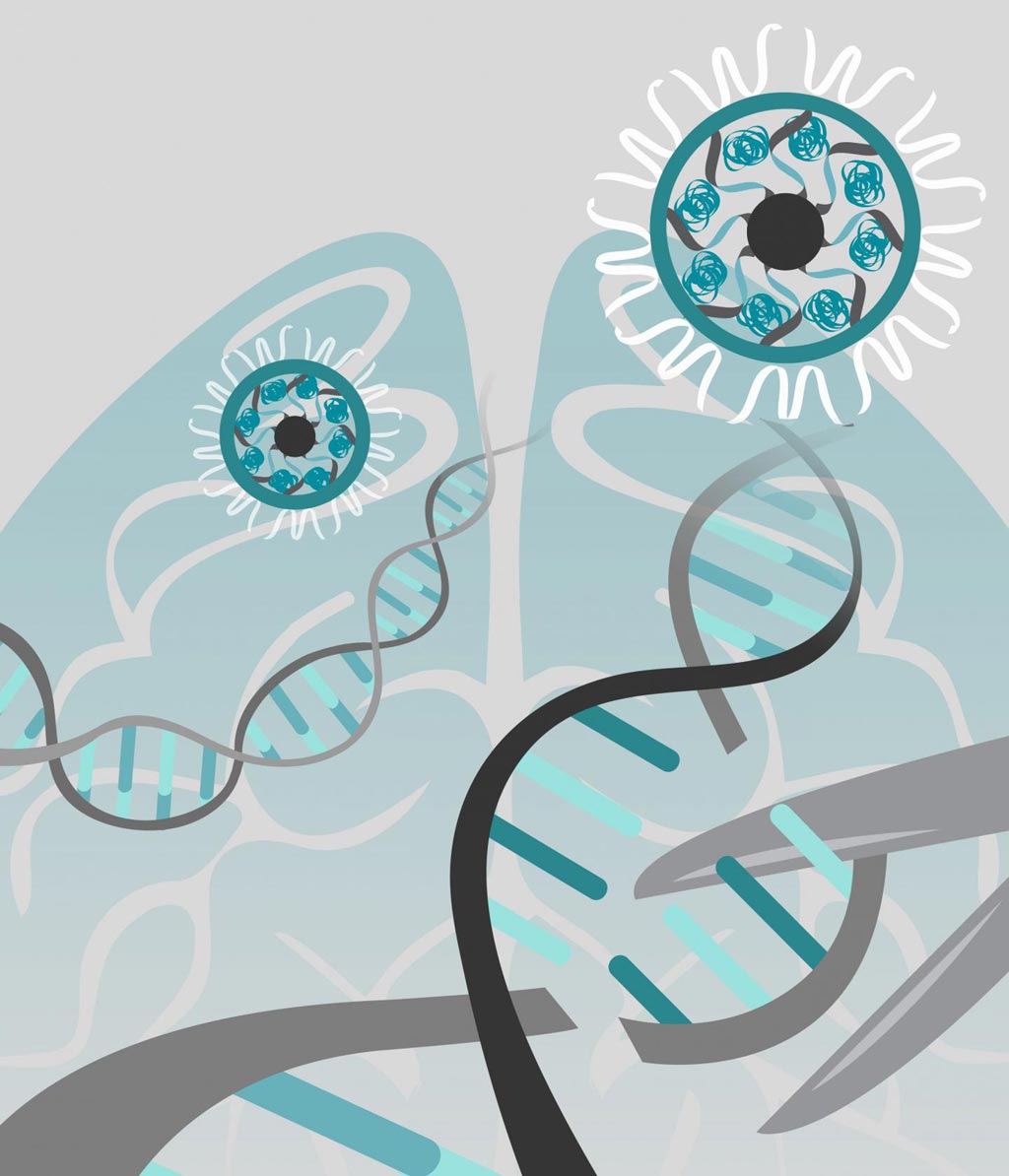CRISPR/Cas9 Corrects Symptoms of Fragile X Syndrome in Model
By LabMedica International staff writers
Posted on 06 Jul 2018
In order to correct fragile X syndrome in a mouse model, a team of neurological disease researchers used gold nanoparticles rather than viruses to deliver the CRISP\Cas9 gene-editing tool to cells in striatum, a brain region associated with formation of habits.Posted on 06 Jul 2018
Fragile X syndrome (FXS) is a genetic disorder. Symptoms often include mild to moderate intellectual disability, physical deformities, and about a third of those affected have features of autism such as problems with social interactions and delayed speech. Hyperactivity is common and seizures occur in about 10% of patients.

Image: This artist\'s concept shows two nanoparticles coming into the brain (at top) while a pair of scissors cuts at bottom right. Use of gene editing to cut DNA at a precise location reduced autism symptoms in mice with fragile X syndrome (Photo courtesy of the University of California, Berkeley).
Investigators at the University of Texas Health Science Center at San Antonio (USA) worked with multiple mouse models to establish a safe method for introducing the CRISPR/Cas9 gene-editing tool into the brains of adult mice.
CRISPR/Cas9 is regarded as the cutting edge of molecular biology technology. CRISPRs (clustered regularly interspaced short palindromic repeats) are segments of prokaryotic DNA containing short repetitions of base sequences. Each repetition is followed by short segments of "spacer DNA" from previous exposures to a bacterial virus or plasmid. Since 2013, the CRISPR/Cas9 system has been used in research for gene editing (adding, disrupting, or changing the sequence of specific genes) and gene regulation. By delivering the Cas9 enzyme and appropriate guide RNAs (sgRNAs) into a cell, the organism's genome can be cut at any desired location. The conventional CRISPR/Cas9 system is composed of two parts: the Cas9 enzyme, which cleaves the DNA molecule and specific RNA guides that shepherd the Cas9 protein to the target gene on a DNA strand.
The investigators reported in the June 25, 2018, online edition of the journal Nature Biomedical Engineering that intracranial injection of CRISPR–Gold nanoparticles, a nonviral delivery vehicle for the CRISPR–Cas9 ribonucleoprotein, could edit genes in the brains of adult mice in multiple mouse models. CRISPR–Gold could deliver both Cas9 and Cpf1 ribonucleoproteins and could edit all of the major cell types in the brain, including neurons, astrocytes, and microglia, with undetectable levels of toxicity at the doses used.
The investigators also showed that CRISPR–Gold designed to target the metabotropic glutamate receptor 5 (mGluR5) gene, which encodes an excitatory protein that increases communications between neurons, could efficiently reduce local mGluR5 levels in the striatum after an intracranial injection. This effect rescued mice from the exaggerated repetitive behaviors caused by fragile X syndrome, a common single-gene form of autism spectrum disorders. After treatment the rodents' digging behavior slowed by 30% and leaping behavior was reduced by 70%.
"The enzyme we used, Cas9, is like a pair of scissors," said senior author Dr. Hye Young Lee, assistant professor of cellular and integrative physiology at University of Texas Health Center at San Antonio. "We were able to cut the genetic blueprint, DNA, at a location that causes the exaggerated repetitive behaviors. The approach can also be used to treat other diseases if we know the gene target. This includes many neurological diseases such as epilepsy, and the brain cancer glioblastoma."
Related Links:
University of Texas Health Science Center at San Antonio













